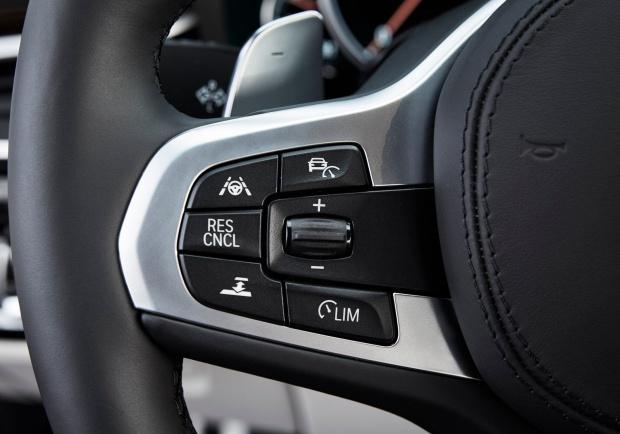Table Of Content

See how we're dedicated to helping protect you, your accounts and your loved ones from financial abuse. Also, learn about the common tricks scammers are using to help you stay one step ahead of them. If you see unauthorized charges or believe your account was compromised contact us right away to report fraud. Make purchases with your debit card, and bank from almost anywhere by phone, tablet or computer and more than 15,000 ATMs and more than 4,700 branches. At one time it was only found on high-end luxury cars, but now even the smallest city cars frequently have it fitted. Cruise control is designed to be used on A-roads and motorways that don’t have frequent stops and turns to negotiate.
Returning a Lease Car: What To Expect
Adaptive cruise control like the kind found in some Acura vehicles, however, is a little more sophisticated. Luxury automakers such as Tesla and Audi are implementing the newest rendition of cruise control on their latest vehicle models – Semi-autonomous Cruise Control. It works largely the same as adaptive cruise control, but assists drivers with lane guidance and steering.
Life has many roads. Your weekly Navigator is just a click away.
You will receive an email if there is a reply to your comment, an update to a thread you follow or if a user you follow comments. Justin Pritchard is an experienced motoring expert whose work is read and watched by Canadians across the country on a weekly basis. Below, we’ll answer some of the most popular Internet search questions about cruise control, so you can make the best use of this important system.
Tuesday's Headlines Are On Cruise Control — Streetsblog USA - Streetsblog USA
Tuesday's Headlines Are On Cruise Control — Streetsblog USA.
Posted: Tue, 30 Jan 2024 08:00:00 GMT [source]
maintaining a carRoad trip essentials: How to plan and pack
So, if the car in front of you slows down, you'll need to step in and adjust your speed manually. This trusty system comes standard on most cars and is great for saving some fuel on those long road trips. You just set the speed you want, and it'll keep your car cruising along at that speed, no problem. It's perfect for those long drives on open highways, but it doesn’t automatically react to other cars on the road. Additionally, adaptive cruise control provides a button to establish the minimum distance it will accept before responding to the slowing or stopped car in front of it. Usually, the factory offers three or four choices from which you can pick.
It’s important to remember that cruise control is not a substitute for attentive driving. Drivers should always remain aware of their surroundings and be ready to take control of the vehicle at any time. Additionally, drivers should not use speed control in certain situations, such as in heavy traffic, on wet or slippery roads, or when driving in mountainous terrain. Overall, it can be a helpful tool for long-distance driving on open roads, but drivers should always use it with caution and be aware of its limitations. It allows cars to talk to each other, coordinating their speeds to maintain a safe distance. It's like having a well-coordinated team of cars all working together to make the traffic flow smoother and reduce congestion.
How is adaptive cruise control different?
The driver can set the cruise control with the cruise switches, which usually consist of ON, OFF, RESUME, SET/ACCEL and COAST. These are commonly located on the steering wheel or on the windshield wiper or turn signal stalk. Tapping the knob in the opposite direction will decelerate the vehicle. As a safety feature, the cruise control system will disengage as soon as you hit the brake pedal.
However, unlike conventional cruise control, this new system can automatically adjust speed in order to maintain a proper distance between vehicles in the same lane. This is achieved through a radar headway sensor, digital signal processor and longitudinal controller. If the lead vehicle slows down, or if another object is detected, the system sends a signal to the engine or braking system to decelerate. Then, when the road is clear, the system will re-accelerate the vehicle back to the set speed.
Florida man put car in cruise control then partially stood up through sunroof while speeding, deputies say - FOX 35 Orlando
Florida man put car in cruise control then partially stood up through sunroof while speeding, deputies say.
Posted: Tue, 02 Apr 2024 07:00:00 GMT [source]

With cruise control, drivers need to brake to slow down as they close in on a slower vehicle in traffic. With adaptive cruise control, the system makes these braking inputs automatically, and the vehicle speeds back up to its pre-set cruising speed once traffic clears. A speed limiter is a type of speed control system that is designed to limit the maximum speed of a vehicle. Unlike other types of cruise control systems, which maintain a set speed, a speed limiter prevents a vehicle from exceeding a certain speed limit. Stop-and-Go speed control systems can help reduce the stress and fatigue of driving in heavy traffic, as the system takes care of maintaining a safe distance and speed.
The cruise control system controls the speed of your car the same way you do – by adjusting the throttle (accelerator) position. However, cruise control engages the throttle valve by a cable connected to an actuator, rather than by pressing a pedal. The throttle valve controls the power and speed of the engine by limiting how much air it takes in (since it’s an internal combustion engine). By maintaining a steady speed, it reduces the likelihood of erratic driving behavior and potential accidents. However, it is important to note that cruise control shouldn't be used in certain conditions, such as heavy traffic or slippery roads. Predictive Cruise Control is like the fortune teller of cruise control systems.
A system of sensors constantly relays information about the car’s speed back to the cruise control system, which adjusts the throttle accordingly to maintain the desired speed. The invention of cruise control can be traced back to the late 1940s and early 1950s, when engineer Ralph Teetor developed the first-speed control system. This innovative feature was designed to help drivers maintain a steady speed, reduce fatigue while driving, and improve fuel efficiency. Over the years, cruise control technology has undergone significant advancements, leading to the development of sophisticated systems like adaptive cruise control.
The engine torque is set to a constant value which will maintain the desired set speed. The cruise control system controls the speed of your car the same way you do -- by adjusting the throttle position. But cruise control actuates the throttle valve by a cable connected to an actuator, instead of by pressing a pedal. The throttle valve controls the power and speed of the engine by limiting how much air the engine takes in (see How Fuel Injection Systems Work for more details). For most drivers, using cruise control on the highway at 80 km/h can reduce fuel consumption by about 20 per cent. For drivers who find difficulty in maintaining a steady speed and frequently experience big fluctuations, using cruise control can cut fuel use by over 40 per cent.
Some systems also have the ability to recognize and respond to pedestrians and other obstacles, providing an added layer of safety. Cruise control is convenient for long stretches of driving and it can keep you from speeding if you set your speed to the correct limit. However, if the road conditions are rainy or snowy, cruise control can be dangerous. To use cruise control safely, it’s best to know when you should and shouldn’t use it. [9] Using cruise control on the highway makes your driving more predictable to other drivers. Instead of constantly changing speeds, cars know how fast you’re driving and can follow safely behind you or pass.
However, they will not apply the brakes in the event of overspeeding downhill, nor stop the car from going faster than the selected speed even with the engine just idling. With adaptive cruise control, your car uses radar and laser sensors to detect the speed of vehicles ahead and then adjusts your own speed accordingly to keep a safe distance. Once they’re out of the way, your adaptive cruise control will accelerate back to the speed you previously set. Standard cruise control, on the other hand, requires you to manually turn off the cruise control (or automatically disengage it by pressing on the brakes) when you notice traffic up ahead. Cruise control systems typically work by adjusting your car’s throttle, which moderates the air going to the engine. In older cars, this was done with a system of physical cables connected to the throttle valve, but newer cars have electronic systems that can adjust the car’s speed with an even higher degree of precision.

No comments:
Post a Comment